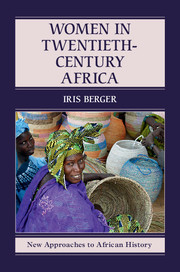Book contents
- Frontmatter
- Dedication
- Contents
- LIST OF ILLUSTRATIONS
- LIST OF MAPS
- PREFACE
- Map
- Introduction
- 1 Colonizing African families
- 2 Confrontation and adaptation
- 3 Domesticity and modernization
- 4 Mothers of nationalism
- 5 The struggle continues
- 6 “Messengers of a new design”: marriage, family, and sexuality
- 7 Women's rights: the second decolonization?
- 8 Empowerment and inequality in a new global age
- Contradictions and challenges
- REFERENCES AND FURTHER READING
- INDEX
7 - Women's rights: the second decolonization?
Published online by Cambridge University Press: 05 May 2016
- Frontmatter
- Dedication
- Contents
- LIST OF ILLUSTRATIONS
- LIST OF MAPS
- PREFACE
- Map
- Introduction
- 1 Colonizing African families
- 2 Confrontation and adaptation
- 3 Domesticity and modernization
- 4 Mothers of nationalism
- 5 The struggle continues
- 6 “Messengers of a new design”: marriage, family, and sexuality
- 7 Women's rights: the second decolonization?
- 8 Empowerment and inequality in a new global age
- Contradictions and challenges
- REFERENCES AND FURTHER READING
- INDEX
Summary
In April 1994, mile-long lines stretched outside South Africa's polling stations as black and white voters waited, often for more than six or seven hours, to cast ballots in the country's first democratic election. Political activist Albertina Sisulu told her daughter-in-law, “The excitement was unbelievable – going to jail, being forced to leave my children – it was all worth it to live to see this day.” As an antiapartheid campaigner and wife of prominent nationalist leader Walter Sisulu, she had suffered frequent arrests and imprisonment, solitary confinement, and years of banning, when her movements and social contacts were severely restricted.
Amid the excitement over this remarkable transformation, commentators rarely noted that the elections were an extraordinary step not only toward racial equality, but also toward equality between women and men. Only a few years earlier, Albie Sachs, a prominent legal figure in the antiapartheid movement, had called patriarchy one of few established nonracial institutions in South Africa. Until the 1980s, black women were legal minors and white women, once married, came under their husbands’ protection. Regardless of race, women had no right to open bank accounts, take out mortgages, or sign official documents in their own names; for many years, teachers who married had to give up their jobs. Transcending this history of legalized subordination, after the 1994 election, women won 106 of the 400 seats in the new National Assembly and South Africa jumped from 141st to 7th place worldwide in the representation of women in the national legislature. Two years later the country adopted one of the most egalitarian, gender-sensitive constitutions in the world, a document that prohibits discrimination not only on the grounds of gender and race, but also on the basis of sexual orientation, motherhood, pregnancy, ethnicity, age, and disability.
Acting quickly and creatively as a follow-up to their electoral success, women activists grappled with a number of key issues. Anxious to establish a strong voice in government without ghettoizing and marginalizing women's concerns, they recommended against creating a separate women's cabinet position. Instead they adopted a policy of “gender mainstreaming,” which mandated that all government agencies diversify their personnel and establish gender-sensitive programs. Directly confronting the country's high level of social conservatism, women also pushed through a new law in 1996 affirming a woman's right to reproductive choice, seeking to end the country's estimated 300,000 backstreet abortions each year.
- Type
- Chapter
- Information
- Women in Twentieth-Century Africa , pp. 151 - 175Publisher: Cambridge University PressPrint publication year: 2016



